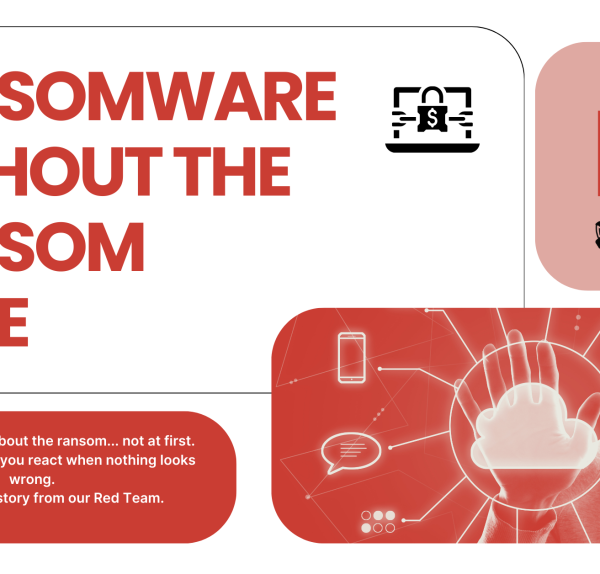Cisco Talos unveiled the discovery of the ArcaneDoor campaign, a sophisticated cyber espionage effort that targets network perimeter devices, specifically Cisco’s Adaptive Security Appliances (ASA). For Chief Information Security Officers (CISOs) with Cisco devices in their networks, understanding the intricacies of this campaign is crucial for ensuring robust cybersecurity defenses.
- Cisco Event Response : https://sec.cloudapps.cisco.com/security/center/resources/asa_ftd_attacks_event_response
- CVE-2024-20353 : https://sec.cloudapps.cisco.com/security/center/content/CiscoSecurityAdvisory/cisco-sa-asaftd-websrvs-dos-X8gNucD2
- CVE-2024-20359 : https://sec.cloudapps.cisco.com/security/center/content/CiscoSecurityAdvisory/cisco-sa-asaftd-persist-rce-FLsNXF4h
- Cisco ASA Forensic Investigation Procedures : https://sec.cloudapps.cisco.com/security/center/resources/forensic_guides/asa_forensic_investigation.html
Understanding ArcaneDoor: A Technical Overview
ArcaneDoor distinguishes itself not just as another malware attack but as a strategic operation likely conducted by state-sponsored actors. This campaign cleverly utilized two zero-day vulnerabilities, CVE-2024-20353 and CVE-2024-20359, to manipulate network traffic and breach perimeter defenses without prior detection. The deployment of malware components known as Line Runner and Line Dancer facilitates these intrusions by enabling persistent access and complex command executions on the compromised devices.
The focus on Cisco ASA devices is particularly alarming as it represents a shift from traditional endpoint-focused attacks to those that can control and surveil entire network flows. This strategy allows adversaries to steal, reroute, or even manipulate data passing through the network.
Technical Challenges and Strategic Implications
The ArcaneDoor campaign underscores several key challenges and strategic implications for organizations:
- Advanced Actor Sophistication: The exploitation of undisclosed vulnerabilities highlights the advanced capabilities of threat actors to stay ahead of detection mechanisms, posing significant challenges in preempting such threats.
- Targeting Critical Infrastructure: The selection of government and critical infrastructure as primary targets reflects the strategic intent and potential national security threats posed by the campaign.
- Perimeter Device Vulnerability: The reliance on perimeter devices like Cisco ASA for security makes them attractive targets. This scenario exemplifies the paradox where the primary defense mechanism becomes the weakest link if not properly fortified.
Best Practices for Mitigation and Response
As a CISO, responding to such sophisticated threats requires a multifaceted approach:
- Immediate Patch Management: It is imperative to apply all security patches released by vendors immediately. Cisco has released patches for the vulnerabilities exploited by the ArcaneDoor campaign. Staying updated with these fixes is crucial for defending against the exploitation of known vulnerabilities.
- Enhanced Monitoring and Detection: Implement advanced monitoring tools capable of detecting unusual activity indicative of a compromise. This includes monitoring for unexpected reboots or unusual network traffic patterns, which could suggest an intrusion.
- Robust Configuration Management: Regularly review and update device configurations to adhere to the best security practices. This includes disabling unnecessary services and ensuring that devices are configured to prevent unauthorized access.
- Network Segmentation: Reduce the risk of widespread network compromise through effective segmentation. This limits the ability of attackers to move laterally across the network.
- Incident Response Planning: Develop and continuously update an incident response plan that addresses potential scenarios involving zero-day vulnerabilities and sophisticated malware attacks. Regular drills and scenario planning can enhance your team’s readiness to respond effectively.
- Intelligence Sharing and Collaboration: Engaging in cybersecurity communities for threat intelligence sharing can provide early warnings and adaptive strategies, enhancing your defensive posture against emerging threats.
Using XRATOR Operator to accelerate ArcaneDoor mitigation
In the context of the ArcaneDoor campaign, where rapid identification and remediation of sophisticated threats are required, XRATOR Operator‘s capabilities in managing and prioritizing vulnerabilities could significantly enhance an organization’s cybersecurity posture. This tool orchestrates Risk-based Vulnerability Management (RBVM) and Cyber Asset Attack Surface Management (CAASM), providing a comprehensive view of all assets and their vulnerabilities. Here are three ways XRATOR Operator could assist in such scenarios:
- Vulnerability Prioritization: XRATOR Operator helps prioritize vulnerabilities based on their impact on business goals, allowing CISOs to focus on critical areas that could be targeted by sophisticated attacks similar to ArcaneDoor.
- Attack Surface Visibility: By offering full visibility of both internal and external assets, XRATOR Operator enables organizations to uncover hidden vulnerabilities, providing an opportunity to secure network devices before they can be exploited.
- Actionable Remediation: With tailored remediation advice, XRATOR Operator translates vulnerabilities into actionable steps. This feature would be crucial in rapidly addressing the kind of zero-day vulnerabilities exploited in the ArcaneDoor attacks, ensuring that patches and security measures are applied effectively.
The ArcaneDoor campaign is a stark reminder of the evolving cyber threat landscape. As CISOs, it is our responsibility to not only react to these threats but also proactively enhance our security frameworks. By understanding the nuances of such sophisticated attacks and implementing comprehensive security measures, we can safeguard our organizations from the potentially devastating impacts of state-sponsored cyber espionage.
The discovery of the ArcaneDoor campaign is a clarion call to all security leaders to reassess and reinforce their network defenses, ensuring they are prepared to counter and mitigate the sophisticated threats posed by today’s cyber adversaries.






